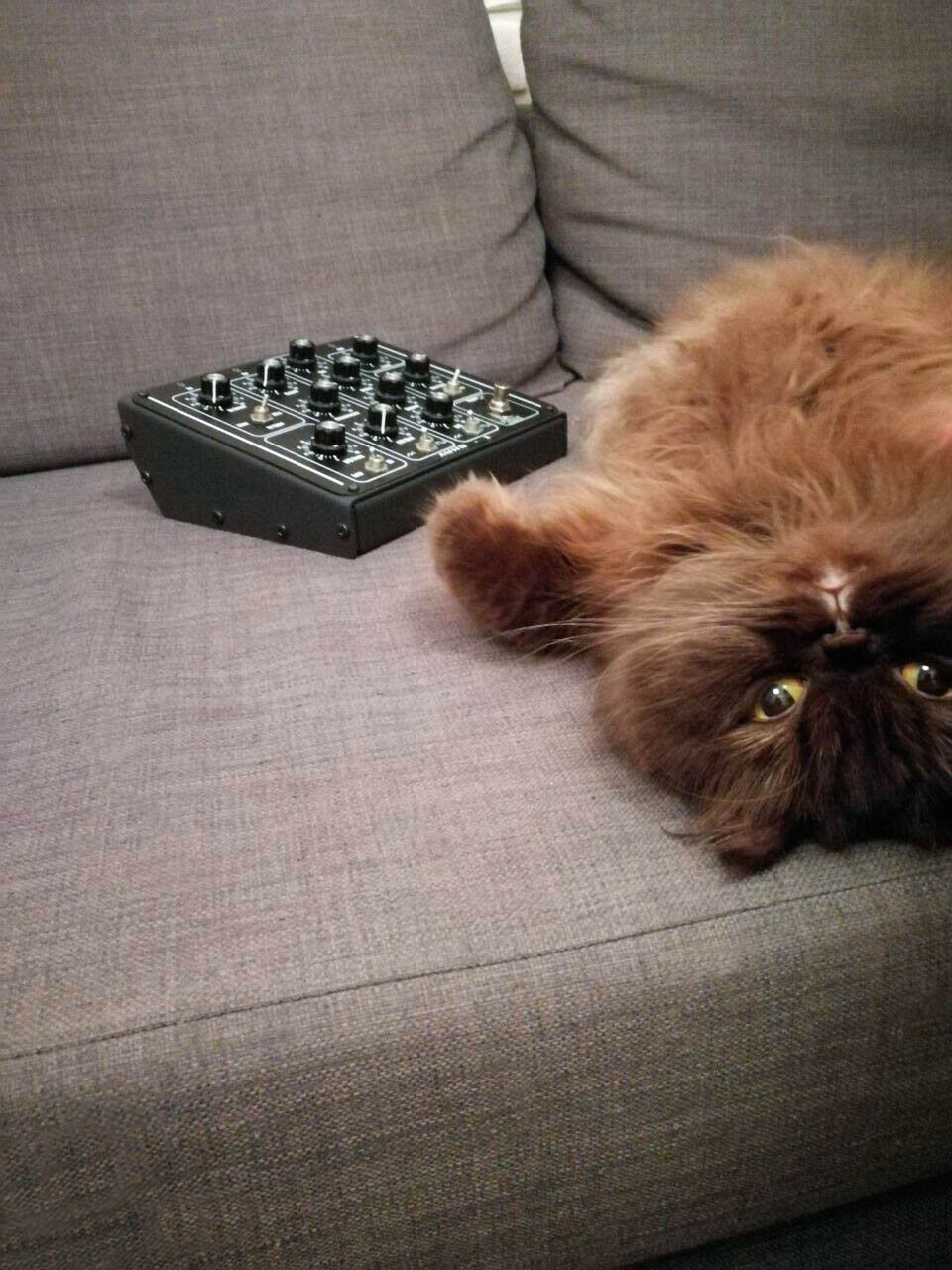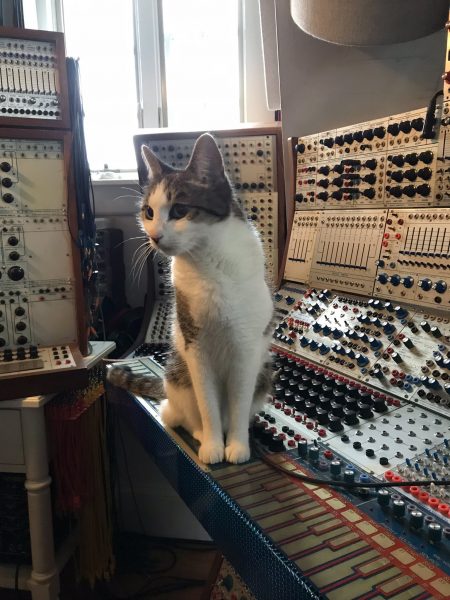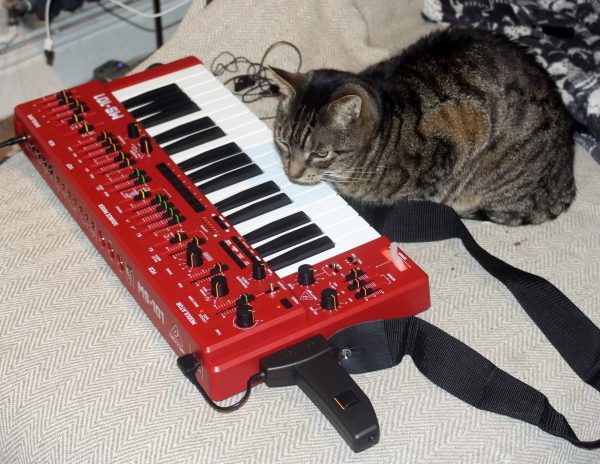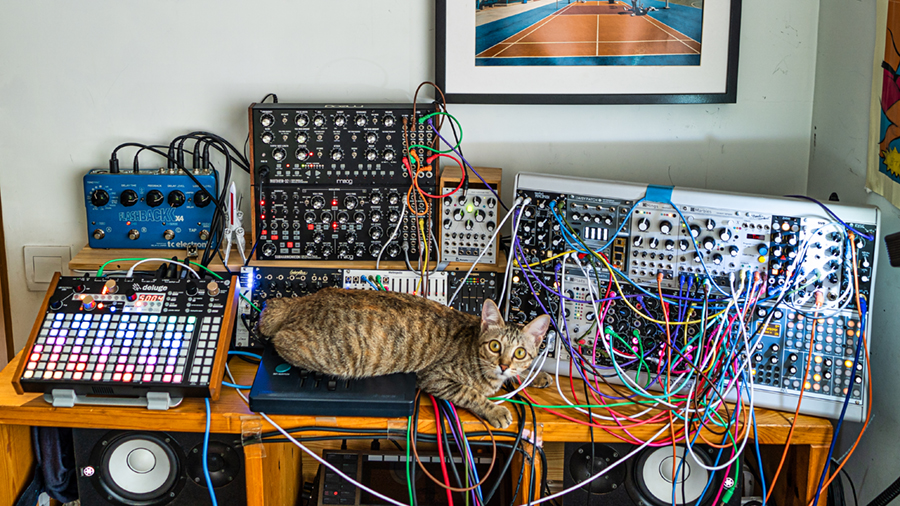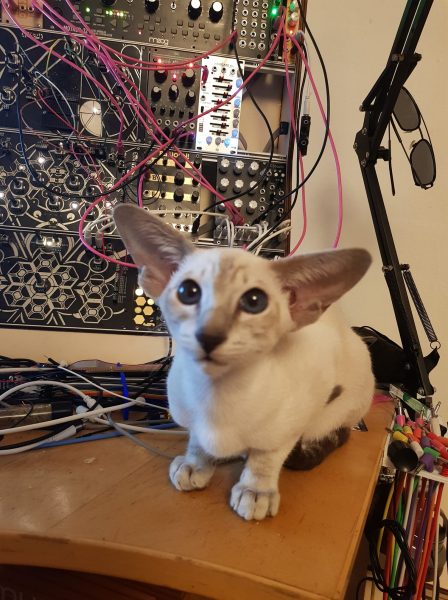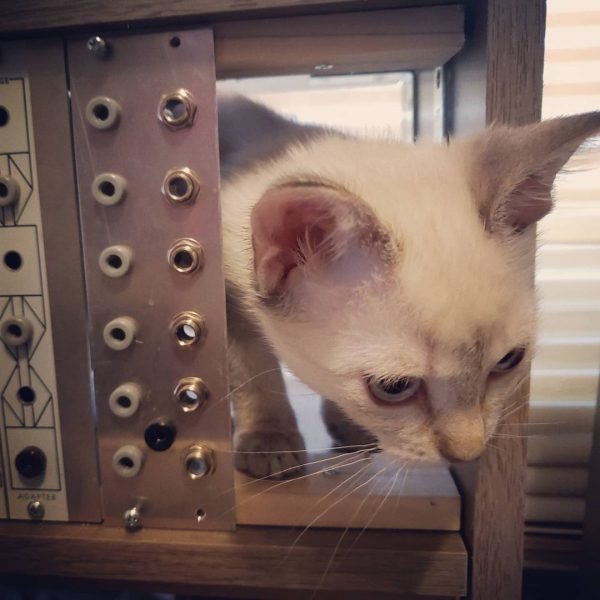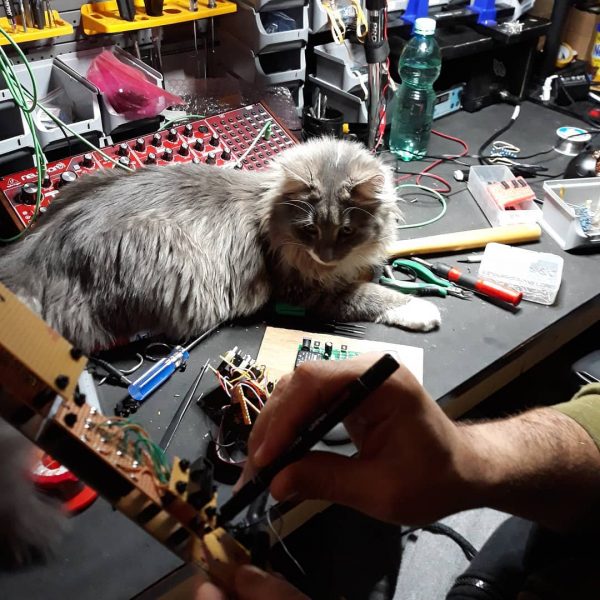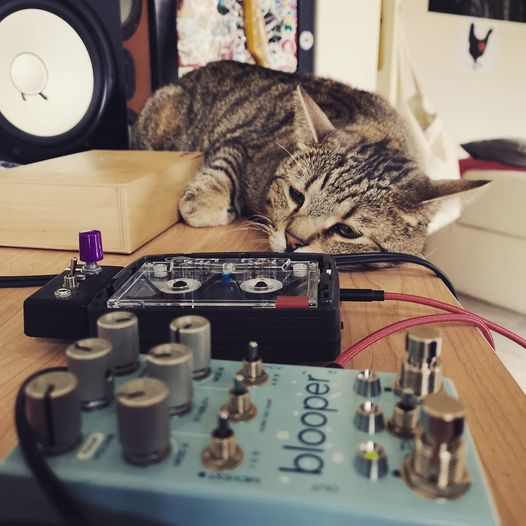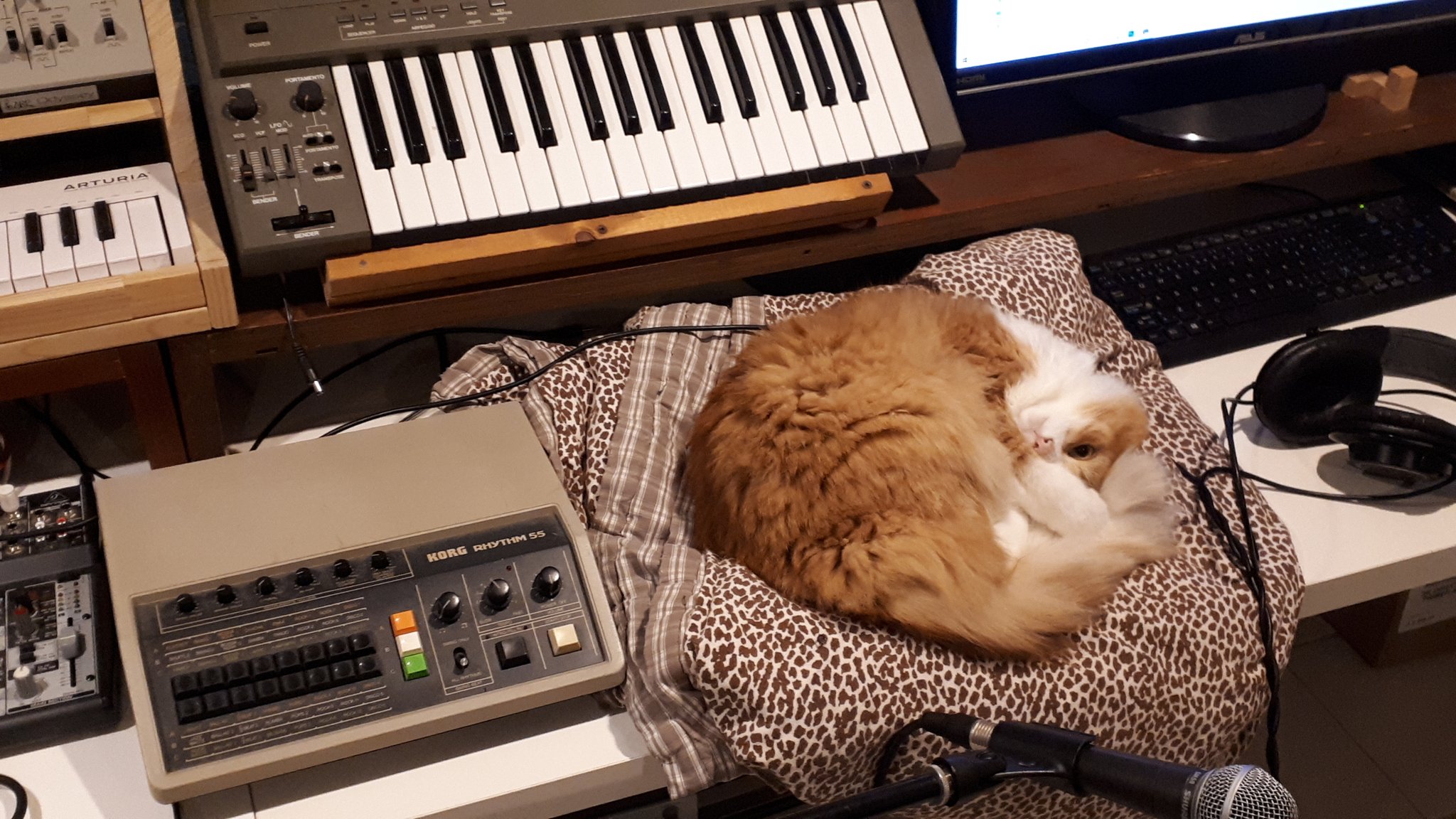
Cleo naps next to a Korg Rhythm 55 vintage drum machine, while keeping a wary eye open. Behind her are a Roland SH-101 and an Arturia keyboard. Submitted by hotham sound via Twitter.
We at CatSynth are quite happy to feature Cleo today. I have also had the opportunity to play a Korg Rhymth 55 in the past, at the Vintage Synthesizer Museum. A bit in the instrument from Vintage Synth Explorer:
he KR55 was, for its time (1979), an advanced preset rhythm drum machine with up to 96 preset rhythm patterns! These patterns cover the whole gamut of presets (Waltz, Samba, Rhumba, Bossa Nova, Tango, Slow Rock, Swing, Rock, etc.). The KR55 also featured a “swing beat” control to add a variation to the groove. Each drum sound’s level can be individually adjusted for each pattern. It can also be externally controlled via footswitch jack for the Start/Stop and Intro/Fill switches. The KR55B was a black-chassis version released a few years later in 1982 with twice as many rhythm patterns. It has been used by Jean-Michel Jarre, Trio and Depeche Mode.
https://www.vintagesynth.com/korg/kr55.php

